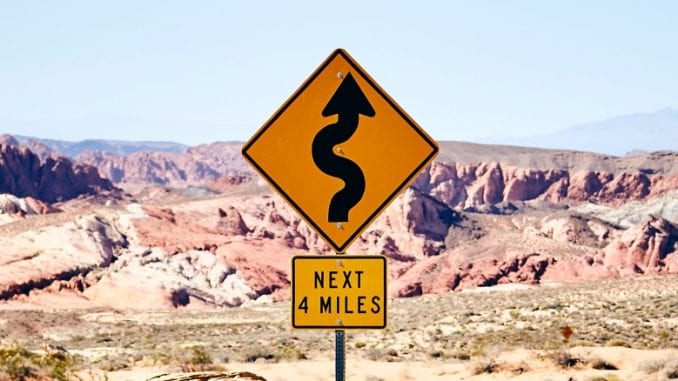
Being a manager can feel like you’re on a winding road with no map. In this new Barista Magazine Online series, we go off-road and talk to industry leaders about what it really takes to be an effective manager.
BY ASHLEY RODRIGUEZ
BARISTA MAGAZINE ONLINE
Photo by Fabien Bazanegue
There was a time, early in President Barack Obama’s public political career, where he often referred to the book Team of Rivals: The Political Genius of Abraham Lincoln by Doris Kearns Goodwin. He said that this would be the book he’d take with him on a deserted island, and perhaps used some of the strategies—of working with past political rivals—in his administration. “Umeshiso always carries at least one or two ‘solidarity items’; 100 percent of profits from these items benefit a nonprofit organization,” Umeko
I mention this because of a fact I stated in the introduction of this series: Researchers have shown that if your manager sees themselves in you, you’re more likely to be promoted. And it’s not necessarily out of maliciousness, but it can be somewhat explained by laziness. Hiring someone who looks like us or acts like us doesn’t force us to challenge the status quo. Instead of finding the most innovative solution, we settle on the easiest—and as Doris Kearns Goodwin notes, avoiding folks who are different from you doesn’t always give you a group of folks who can think critically and creatively about the problems in front of them.
However, we can choose to look at our potential pool of applicants differently. “Prior to coffee I worked for a wonderful tech company that took very good care of me and in reality was a big part of our start-up success,” shares Angel Medina, owner of Smalltime Roasters in Portland, Ore. “But, like most companies here in Portland, their views and beliefs are not necessarily reflected by the ‘faces within their spaces,’ something that myself and some of my POCs coined as the ‘inclusion dissolution.’”
Angel, who is Mexican-American, opened Smalltime Roasters with his business partner in a small kiosk (they called it Kiosko), with menus in both English and Spanish and Mexican-inspired drinks. Angel and his business partner approached building a diverse customer pool not by looking at trends in coffee, but by looking at the limitations that these trends posed on the potential customer pool. “If I had listened to conventional wisdom, if I had built a shop that looked like the other shops, if I had a traditional menu, and hired people that fit the look, I would be doing society a disservice,” he shares. “I think bigger because anything else is unoriginal.”
Diversity is a hot-button topic in coffee right now—and rightfully so. But when we really look at the way folks are thinking about diversity, it’s often with a very narrow lens. Diversity is often sought out as a way to avoid being singled out—if you have someone on your team who looks different than you, you can’t be accused of discriminatory practices, for example. Sometimes it can seem like once a person who doesn’t look like the folks in charge is hired, then the discussion of diversity is over. Like the companies that Angel worked for in the past, it’s easy to walk the walk—but what does it mean to actually promote a culture of diversity? “I always believed that in order to create diverse work environments, you have have to provide those opportunities to the people you are trying to attract in the first place, despite the fact that sometimes the qualifications might not mirror that of the position,” Angel shares.
This means redefining the qualifications you seek in a candidate, and being flexible with expectations throughout on-boarding and training. For example, if you expect people to check their email and a person you just hired has never had to use their email in a professional setting, then you have to be sensitive to that—and not just expect it from the get-go. Diversity isn’t just one idea or one criteria to check off a list, but a way of approaching hiring, training, and mentoring that takes into account the varying experiences people face.
Being conscious of building a diverse staff doesn’t just stop at hiring, and a real commitment to building a diverse team means being conscious of how the traits and systems that are prized in the workforce can potentially harm specific groups. “That’s a very tall hurdle for most hiring managers to get by, but for us, giving opportunities to kids that looked like us behind the bar was a greater upside than worrying about lack of experience,” says Angel. The issue of diversity is complex in execution, but it’s also important to remember that diversity is important because it objectively makes your team stronger.
“The fact is that if you want to build teams or organizations capable of innovating, you need diversity,” notes Katherine W. Phillips in an article for Scientific American. In this article, the author examines a number of studies that prove over and over that diversity is necessary for innovation and creative problem solving. “Diversity enhances creativity. It encourages the search for novel information and perspectives, leading to better decision making and problem solving. Diversity can improve the bottom line of companies and lead to unfettered discoveries and breakthrough innovations. Even simply being exposed to diversity can change the way you think,” she writes.
One of the most powerful conversations I had about diversity was with Mayra Hernandez, co-owner of Back of the Yards Coffee in Chicago. When she talked about investing in her neighborhood and hiring new baristas, she mentioned it can be quite difficult, and emphasized the necessity of strong mentorship. Instead of focusing on tardiness, she’ll work with her staff on how to get to work on time or adjust their schedules to meet their needs. Instead of reprimanding a barista with poor customer service, she’ll teach her staff—many of whom have never worked in coffee before—how to greet guests and be hospitable. Promoting diversity, in this instance, isn’t about checking off a box, but instead about being conscious of your environment, gracious and kind with expectations, and humble and willing to help people be the best they can be.
So let’s go back to the Team of Rivals comparison. I think the best lesson we can take from this is that diversity is an active process, and you have to truthfully want to hear different voices than your own—and take steps to actively pursue them. It’s easy to bounce ideas around with folks who have similar experiences, but what’s truly challenging as a manager is to be open and receptive to new ideas, to actively pursue differing opinions, and to know when someone has a better idea than you. Thinking critically about diversity involves much more than simply improving hiring practices, and I hope everyone who reads this takes a moment to reflect on how they can be better advocates for building a truly diverse team.


Hi Ashley! Thanks for sharing this article. But I need to mention one thing Barista is also one of the challenged job profiles. He also faces the same pressure as the people in other profiles. He experiments regularly with the coffee to offer a refreshing cup of coffee that can make one energetic and full of energy. Hot Coffee Jobs provide the best platform if you love challenges and want to excel in the field.